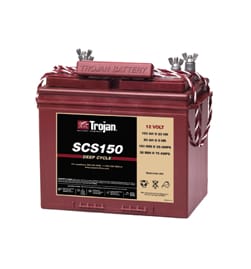PC2250
By Odyssey

PC2250
Marine / RV
You rely on your watercraft and RV to get you where you need to go. We offer a wide variety of deep cycle, maintenance-free and gel cell batteries for all types of vessels. Whether on land or at sea, our marine and RV power solutions keep you moving.
Specifications
- ItemPC2250
- Voltage12
- Length (in.)11.26
- Width (in.)10.59
- Height (in.)9.17
- BrandOdyssey
- Capacity240
- CAH 10HR114
- CAH 20HR126
- Torque Specs100 lbs.
- TerminalSAE Terminal and 3/8" Stud
- Cold Cranking Amps @ 0℉1225
- Reserve Capacity Minutes240
- Internal Resistance2.1
- Short Circuit Current5000A
More About Odyssey
Odyssey lead-acid batteries offer twice the power and triple the lifespan of conventional designs. They are made of pure lead and are able to handle up to 80% discharge depth demand up to 400 cycles. Odyssey batteries are designed to deliver unrivaled quality performance.
Related Documents
Related Categories
Featured Batteries
Car Battery Myths Busted: Separating Fact from Fiction
The battery is the heart of your vehicle, powering everything from the engine to the electronics you rely on daily — yet, it’s often misunderstood. From outdated advice about storage to misconceptions about charging, these myths can lead to unnecessary replacements, unexpected breakdowns and added frustration.
Preparing Your Fleet for Winter: Essential Battery Tips for Businesses
Commerce doesn’t stop when the weather turns cold, but winter weather can wreak havoc on freight networks and the trucks that keep them moving. In addition to weather-related accidents due to hazardous driving conditions, extreme cold can strain vehicle systems, reducing efficiency and increasing wear on critical components.
Prepare for Potential Port Strike with Assistance from Continental Battery Systems
Disruptions in the supply chain can wreak havoc on everyday lives and business operations. Through it all, Continental Battery Systems remains committed to helping customers ensure they have the power they need to run equipment and vehicles.





